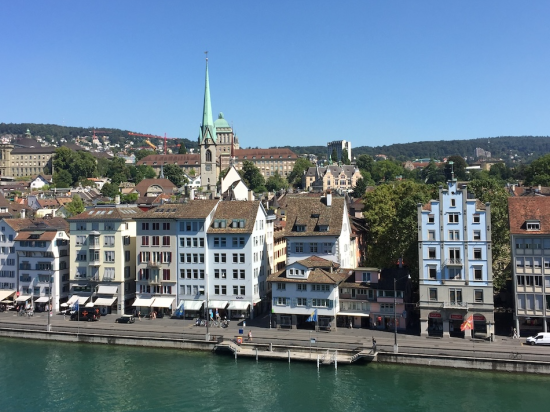Turicum – Zurich's Roman Foundations
Zurich's Lindenhof: Where Rome Meets Switzerland
Perched atop a hill in the heart of Zurich, the Lindenhof is more than just a leafy park with stunning views. It’s a time machine, a place where you can stand and feel the weight of centuries on your shoulders. And it’s here, in this serene spot overlooking the Limmat River, that Zurich’s story really begins—with the Romans.
The Roman Footprint: Turicum’s Humble Beginnings
Long before Zurich became the bustling financial hub we know today, it was a modest Roman customs post known as *Turicum*. Around 15 B.C., the Romans, masters of empire-building, recognized the strategic value of this location. With the Alps to the south and the vast expanse of the northern provinces beyond, Turicum was ideally situated on a trade route that connected the Roman Empire’s vast territories.
The Romans, never ones to shy away from a good hill, chose the Lindenhof for their fort. From here, they could survey the land and control the vital passageway along the Limmat River. This military post wasn’t just a collection of tents and temporary structures—it was a fortified settlement. The Romans built a *castrum*, a type of Roman fortification, on this very spot. It was here that soldiers, merchants, and administrators mingled, all under the watchful eyes of Rome.
A Fortified Legacy: The Castellum at Lindenhof
What’s remarkable about the Lindenhof is that it wasn’t just a military post. By the 2nd or 3rd century, it had evolved into a small, but thriving, settlement. The *castellum*—a fortified Roman villa or castle—was built here, its walls encircling what would later become the heart of Zurich. Imagine Roman soldiers in their helmets and armor, marching through what is now a quiet park where locals play chess and tourists snap photos.
The remains of the Roman fortifications have been largely lost to time, but their influence is unmistakable. In fact, during the Middle Ages, the Lindenhof was used as a base for the defenses of the early medieval city. The hill retained its strategic importance through the centuries, serving as a reminder of Zurich’s military and administrative roots.
Lindenhof Today: A Peaceful Echo of History
Fast forward a couple of millennia, and the Lindenhof is no longer a military outpost but rather a beloved public park. It’s one of Zurich’s oldest and most cherished green spaces, offering panoramic views of the city, the river, and the distant Alps. The park is dotted with lime trees (hence the name "Lindenhof"), and its tranquil atmosphere belies the fact that it was once a hub of Roman activity.
Visitors to the Lindenhof today can still sense the ancient history that lies just beneath the surface. There’s even a commemorative stone that marks the site of the old Roman fort, a quiet nod to the city’s origins. As you stand on the hill, overlooking the rooftops of Zurich, it’s easy to imagine the Roman soldiers who once stood in the same spot, gazing out over their domain.
A Walk Through Time
The beauty of Lindenhof is that it’s a place where past and present effortlessly blend. It’s a spot where locals and tourists alike can escape the hustle and bustle of modern Zurich and connect with the city’s ancient roots. Whether you’re a history buff, a casual visitor, or just someone looking for a peaceful spot to enjoy a sunny afternoon, Lindenhof offers a unique window into Zurich’s rich and layered history.
So next time you’re in Zurich, take a stroll up to the Lindenhof. Breathe in the fresh air, take in the views, and let your mind wander back to the days when this hill was a small but vital piece of the vast Roman Empire. After all, it’s not every day you get to stand in a place where history, in all its Roman glory, truly comes to life.


